Small Interventions - Big Impact
Jože Plečnik marked Ljubljana with his architecture that respect heritage and reuse architectural elements within innovative application of local building materials and prefabricated elements. His resourcefulness was conditioned by municipal authorities’ limited financial resources. Therefore he used cheaper construction materials and didn’t demand any payment for his work.
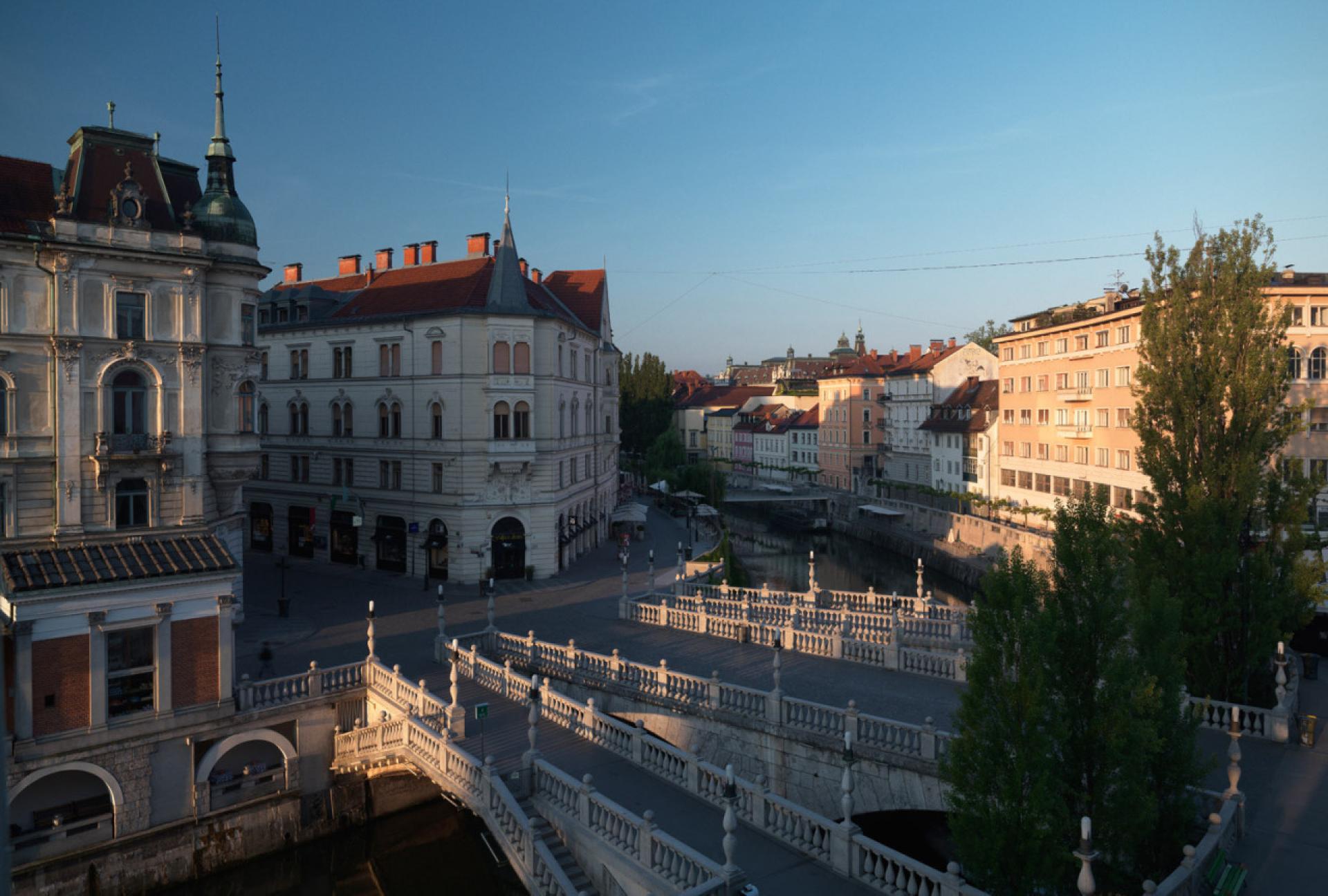
Triple Bridge in the historical city center of Ljubljana. | Photo by Matevž Paternoster, MGML
Plečnik gradually realized his vision of Ljubljana over nearly three decades. He upgraded the existing city in relation with the existing architectural heritage. In the period between 1921 and 1957 he added a series of exceptional buildings and minor renovations, which essentially contributed to the city’s appearance. He managed to create an original architectural composition from a variety of architectures from different historical periods. An excellent example of his intertwining new and old is the Triple Bridge, where he preserved the old stone bridge and created a new ambient within adding two foot bridges.
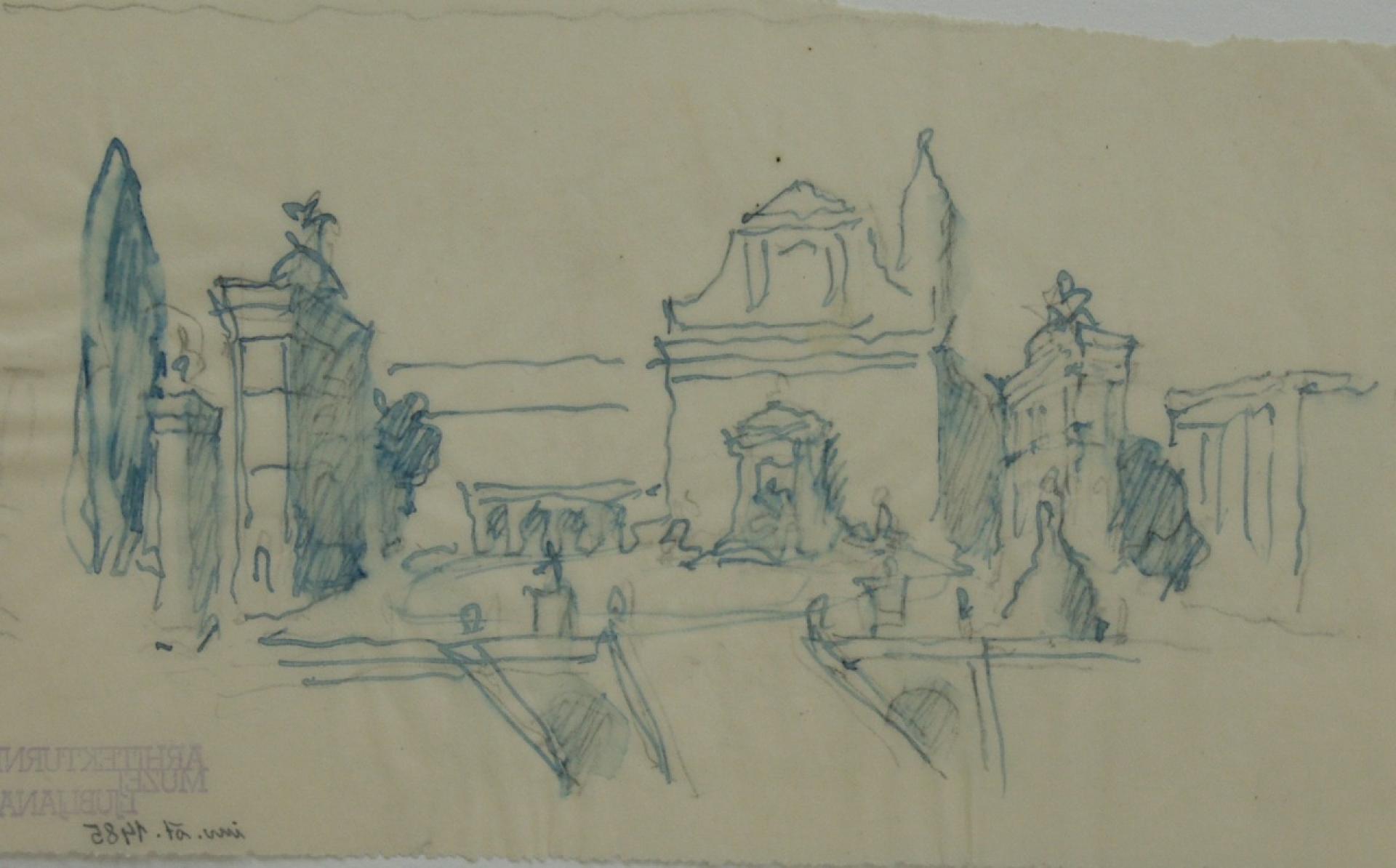
Plečnik’s sketch for the Triple Bridge, c. 1930 | Photo via MGML documentation
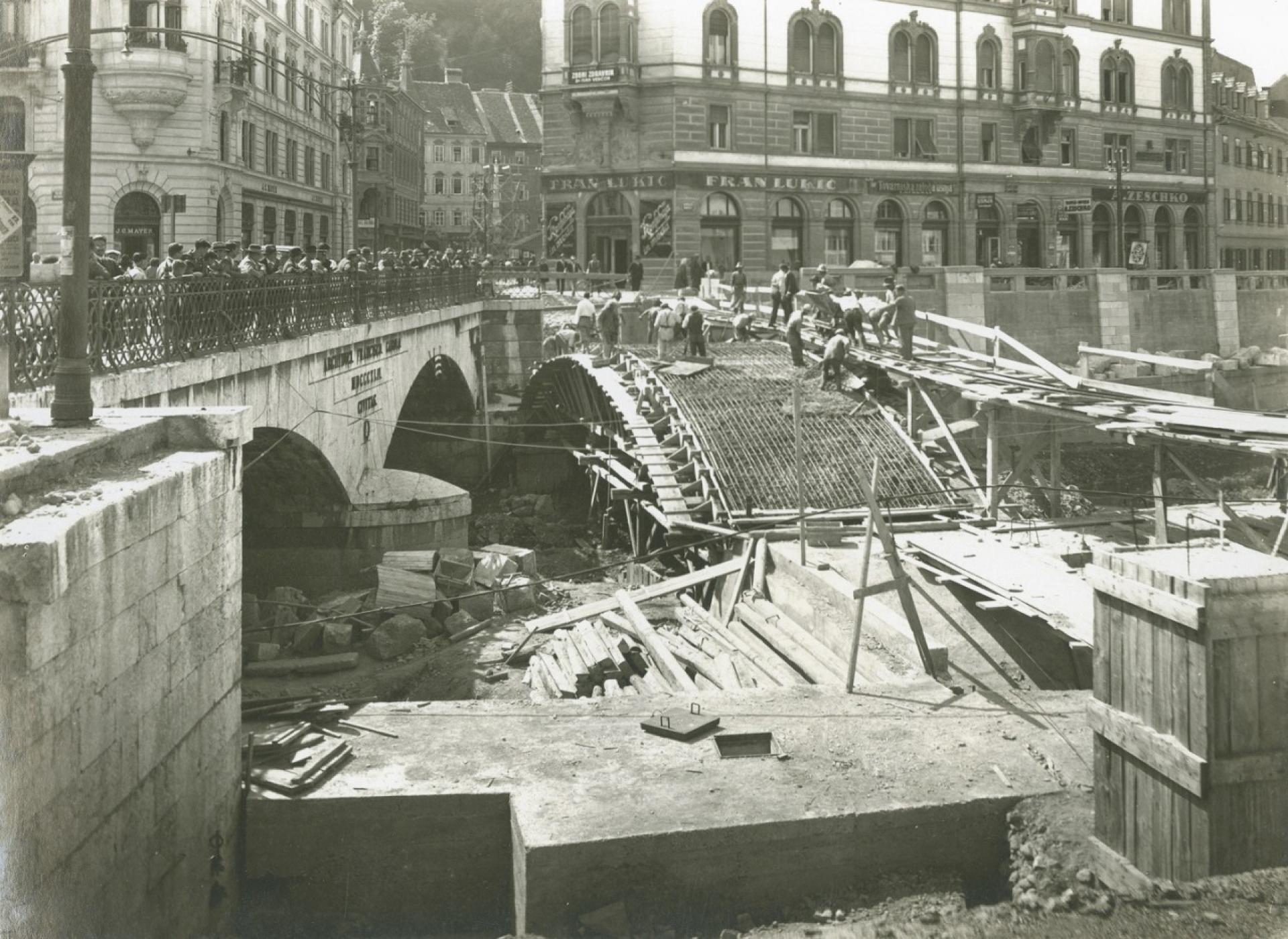
The construction of the Triple Bridge in 1931. | Photo via MGML documentation
Plečnik’s ingenious solution for the link between the banks of the river Ljubljanica seems like a river portal resembling Venetian bridges and gives Ljubljana a Mediterranean character. Until the construction of Triple Bridge (1932), the historical city and the part of the city of later development were linked by the Franciscan Bridge, which became a bottleneck after the First World War. Plečnik completed it with two lateral footbridges. These were not set parallel to the old bridge, but so as to funnel Prešeren Square’s space into the narrow Stritarjeva Street and further on towards Town Square as the central part of the historical city. This configuration of Triple Bridge integrates banks of Ljubljanica river into a single composition. The appearance of unity of all three bridges was achieved with balustrades and Venetian balusters, placed on the existing middle bridge. This design, which represented for the city a relatively modest investment, was part of Plečnik’s vision for reviving the riverside area.
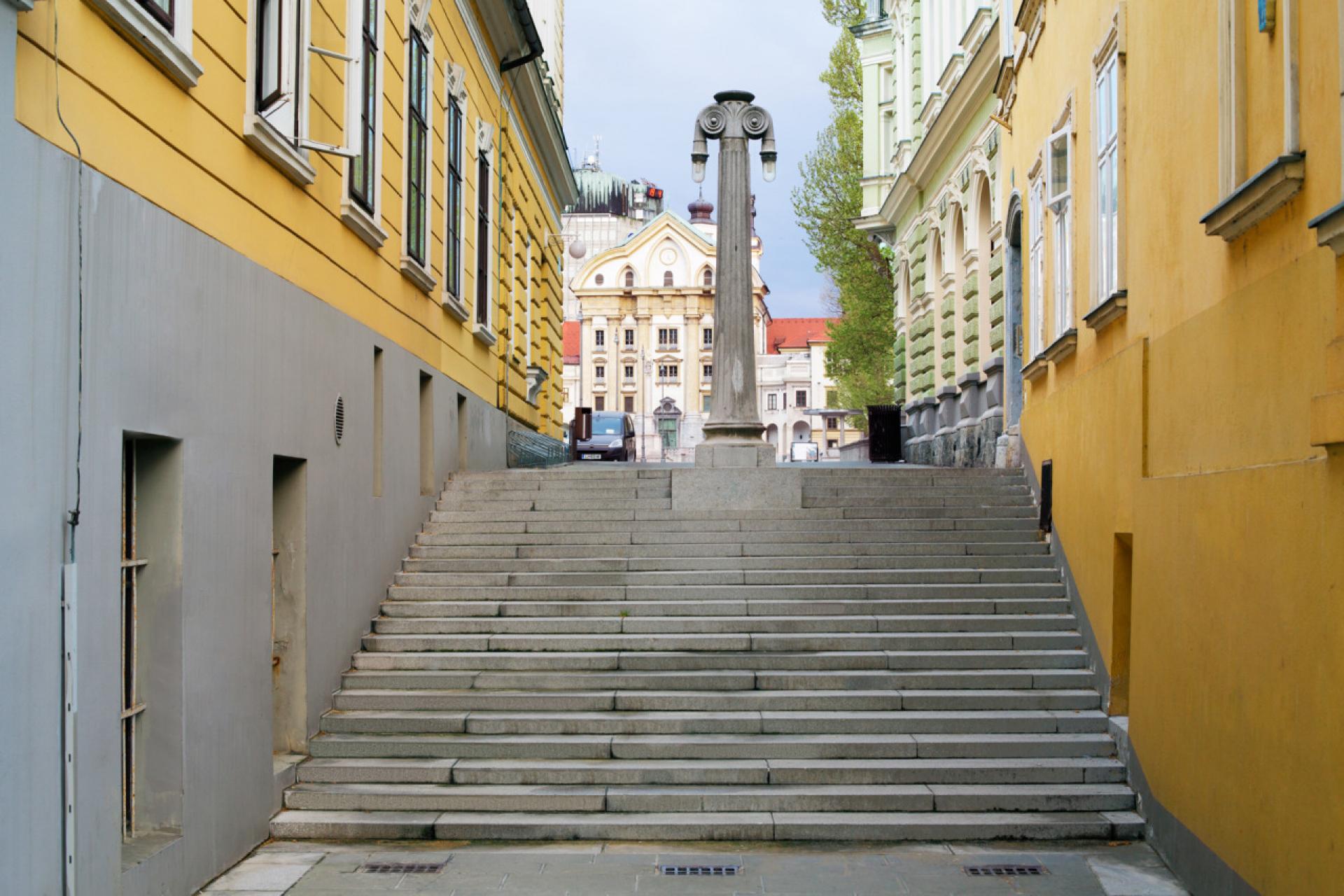
Small intervention Gledališka stolba emphasizes the Zvezda Park.| Photo by Andrej Peunik, MGML
When working on large projects, Plečnik was focused on connecting them with the existing urban fabric by means of minor interventions. In such way he reconnected the largest Ljubljana square - Congress Square - with Zvezda Park and the Ljubljanica River embankment by means of two new stairways.
To the side of the Philharmonic Hall building he constructed Gledališka stolba (1933), a stairway leading down to the embankment, embellished with an elegant lamp post which optically connects the upper square and the lower lying embankments. Just nearby he constructed Gerber stairway, which creates within a footbridge a river landing stage. In the construction of the Gerber stairway he employed the iron fence of the old Franciscan Bridge and the stones left over after the old Cobblers’ Bridge had been replaced by the new one. Both interventions were made as continuations of Zvezda Park’s diagonal walking paths.

Gerber stairway is narrower towards the top, thereby creates the perspective effect of depth. | Photo by Andrej Peunik, MGML
Plečnik as well added a facade to the building of the Philharmonic Society in 1937, which is situated direct towards the river between the two small interventions. The facade was constructed after the Ursuline Church elevation on the other side of the Zvezda Square to illustrate the river’s undulation.
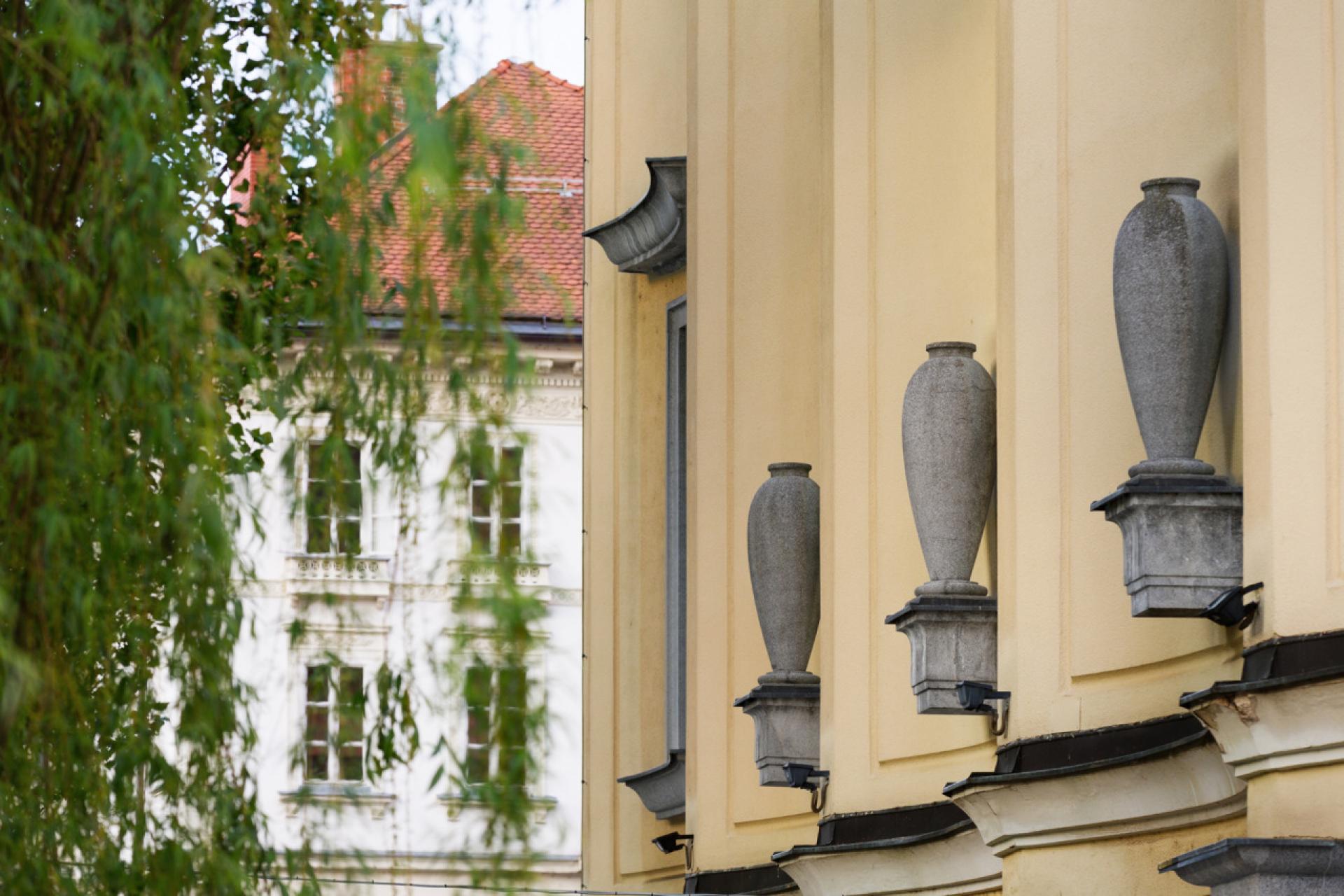
The rear side of the Philharmonic Society building showing the river’s undulation. | Photo by Andrej Peunik, MGML
Wherever possible, Plečnik built bridges to connect the medieval city at the foot of the Castle Hill with the well-arranged squares on the left bank, and to open views towards the river. He also often respectfully preserved old architecture and incorporated it into a new composition. In 1929, he first redesigned Jurčič Square by erecting boundary posts and building stairs leading down to the shops. In 1932 he continued his work by building a new Cobblers’ Bridge and redesigning the opposite bank. There he laid the cobblestone surface to form a ramp leading to the bridge’s new level. Cobblers’ Bridge is built of artificial stone and designed as a large square on the river.
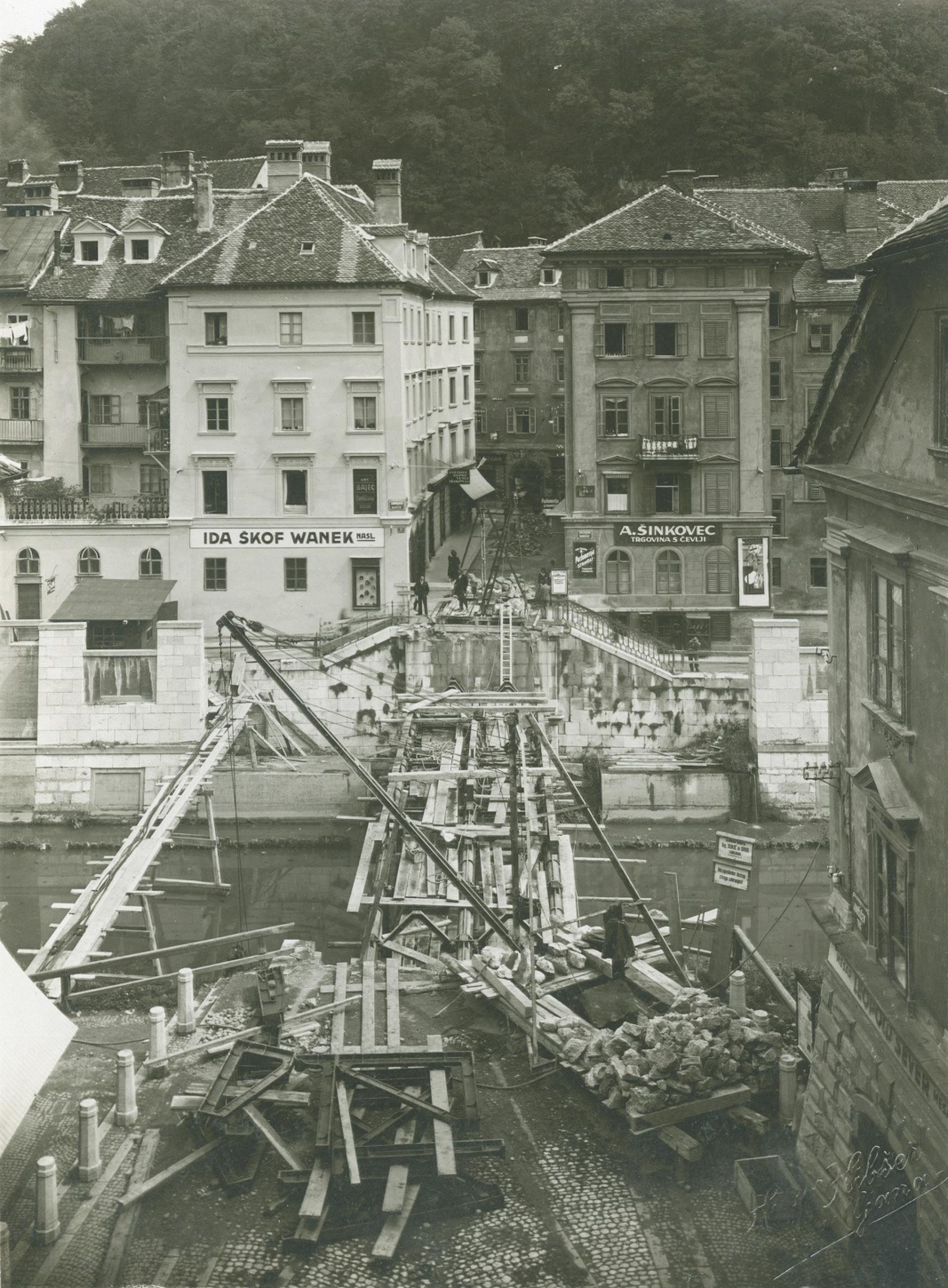
The construction of The Cobblers’ Bridge in 1931. | Photo via MGML documentation
He preserved the old cast iron bridge from 1867 and relocated it to a new position on the Poljane embankment. This bridge was relocated again in 2011, restored as a footbridge that connects Prule and Trnovo districts near the historical city. By re-designing river banks and bridges, and thoughtfully placing plantings intended as important architectural features, Plečnik gave a Mediterranean feeling to the city alongside the Ljubljanica River. He regarded the water element as a suitable complement to architecture. For him, the gradual arrangement of the city was a work of art in the making. The urban area by the river created to suit the needs of dwellers is nowadays the most pleasing and visited section of the city.
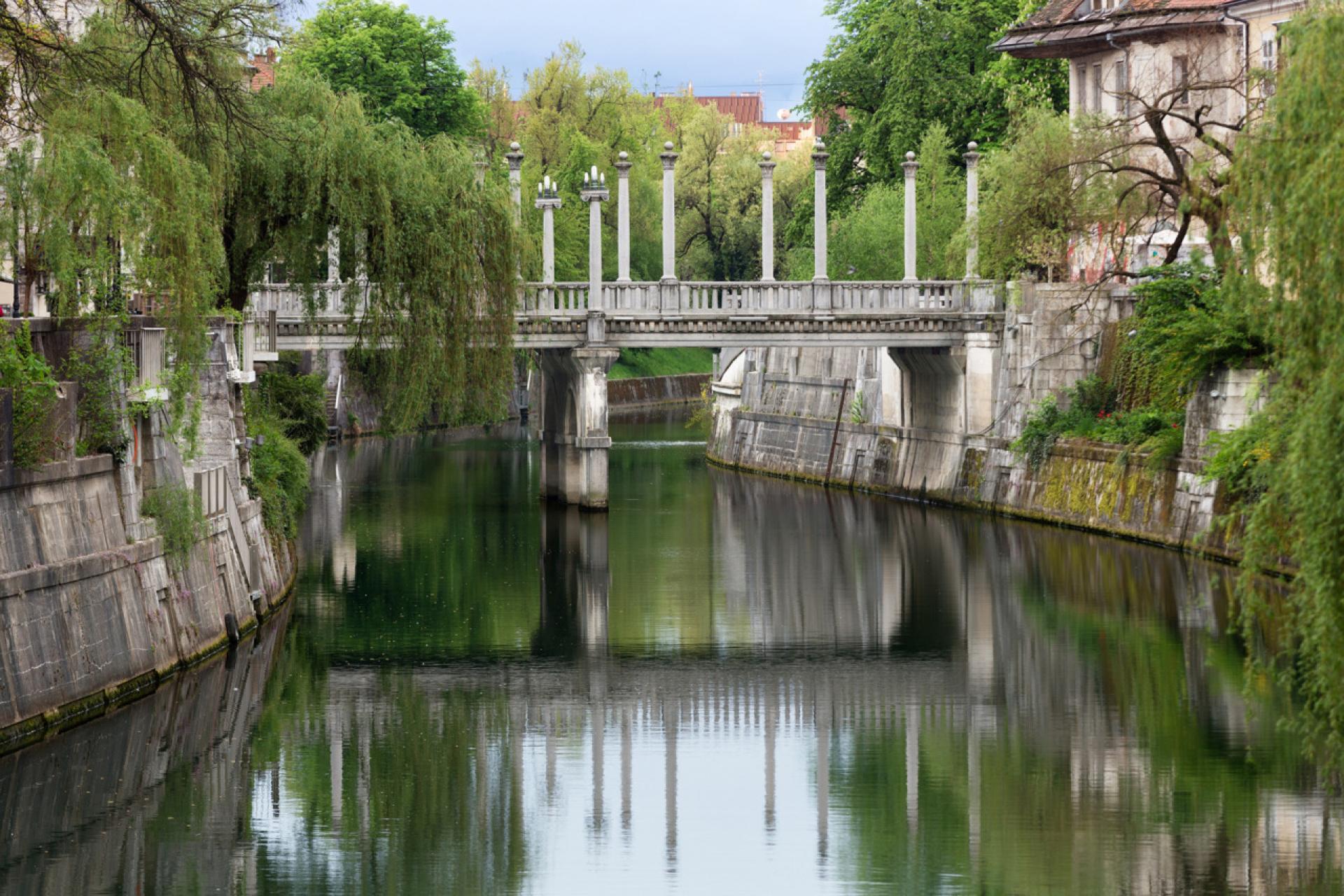
The Cobblers’ Bridge today. | Photo by Andrej Peunik, MGML

1. The Triple Bridge, 2. Gerber Stairway, 3. Gledališka stolba and Philharmonic Society Building, 4. The Cobblers’ Bridge, 4a. Location of old iron bridge until 2011, 4b. Location of the old iron bridge today | Source of the map via Wikimedia Commons
—
by Ana Porok, Curator at Plečnik House, Museum and Galleries of Ljubljana